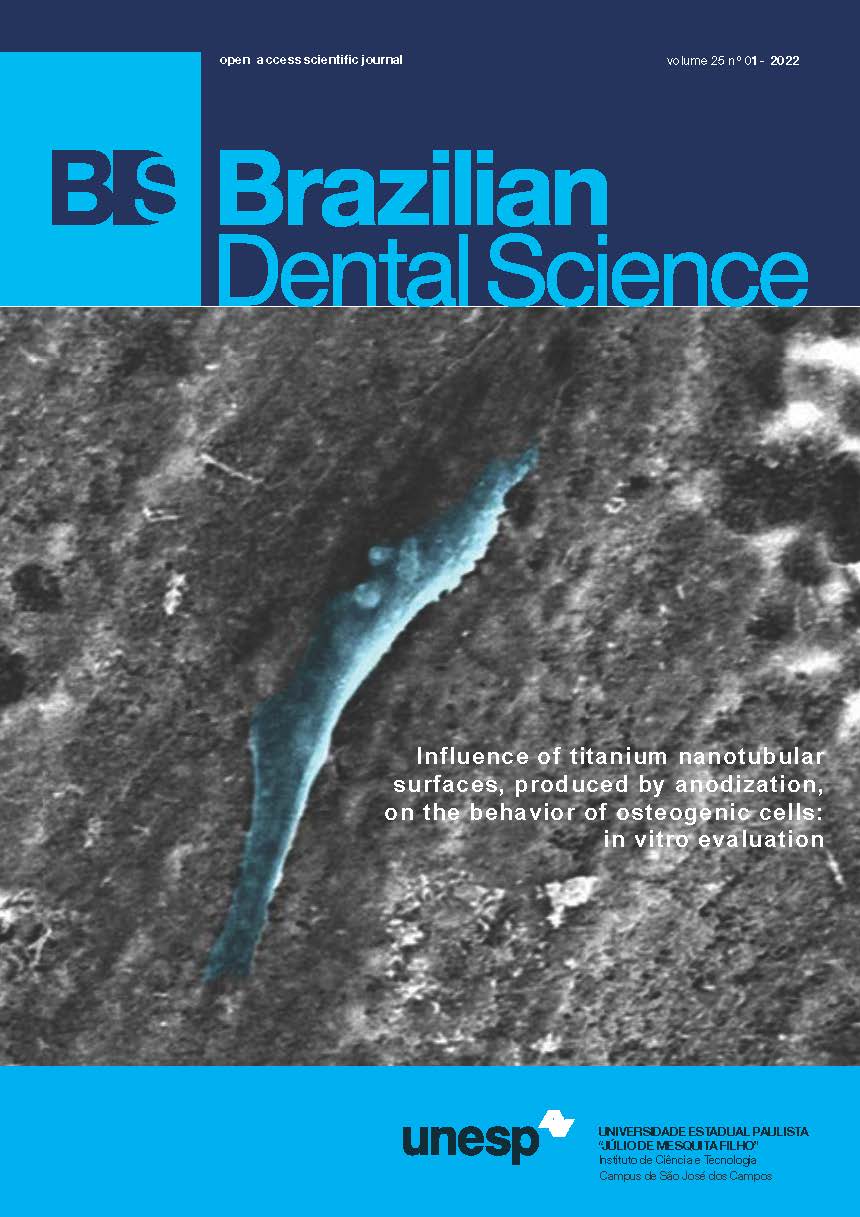Incorporation of a polymerization catalyst for improved mechanical behavior and physicochemical characteristics of a light-cured pulp capping material
DOI:
https://doi.org/10.4322/bds.2022.e2857Abstract
Objective: To evaluate the influence of the incorporation of a polymerization catalyst to a light-cured pulp
capping material on mechanical behavior and physicochemical characteristics. Material and Methods: Different
percentages (2 wt%, and 4 wt%) of diphenyliodonium hexafluorophosphate (DPI) were incorporated into the
Ultra-Blend Plus, a resin-modified calcium-based cement. The material without incorporation of DPI (0 wt%)
served as control. Degree of Conversion (DC), Flexural Strength (FS), Elastic Modulus (EM), Water Sorption
(WSp), Solubility (Sl), and pH of eluate at 24-h, 72-h, and 7-day storage times were measured. One-way ANOVA/
Tukey posthoc tests were used to analyze the data (p <0.05). Results: For DC, FS, and EM, materials with
different % of DPI showed statistically significant differences, so that 0% provided the lowest values and 2% the
highest values. Materials with 0% and 2% of DPI provided statistically the lowest WSp, whilst material with 0%
of DPI showed statistically the highest Sl. Conclusion: All materials provided statistically similar pH to eluates
regardless of storage time, although only materials with DPI at 2% and 4% maintained pH of eluates statistically
similar from 72 h to 7 days storage times.
KEYWORDS
Light-cured pulp capping material; Polymerization catalyst; Pulp capping.
Downloads
Downloads
Published
Versions
- 2022-03-29 (2)
- 2022-03-14 (1)
How to Cite
Issue
Section
License
Brazilian Dental Science uses the Creative Commons (CC-BY 4.0) license, thus preserving the integrity of articles in an open access environment. The journal allows the author to retain publishing rights without restrictions.
=================




























